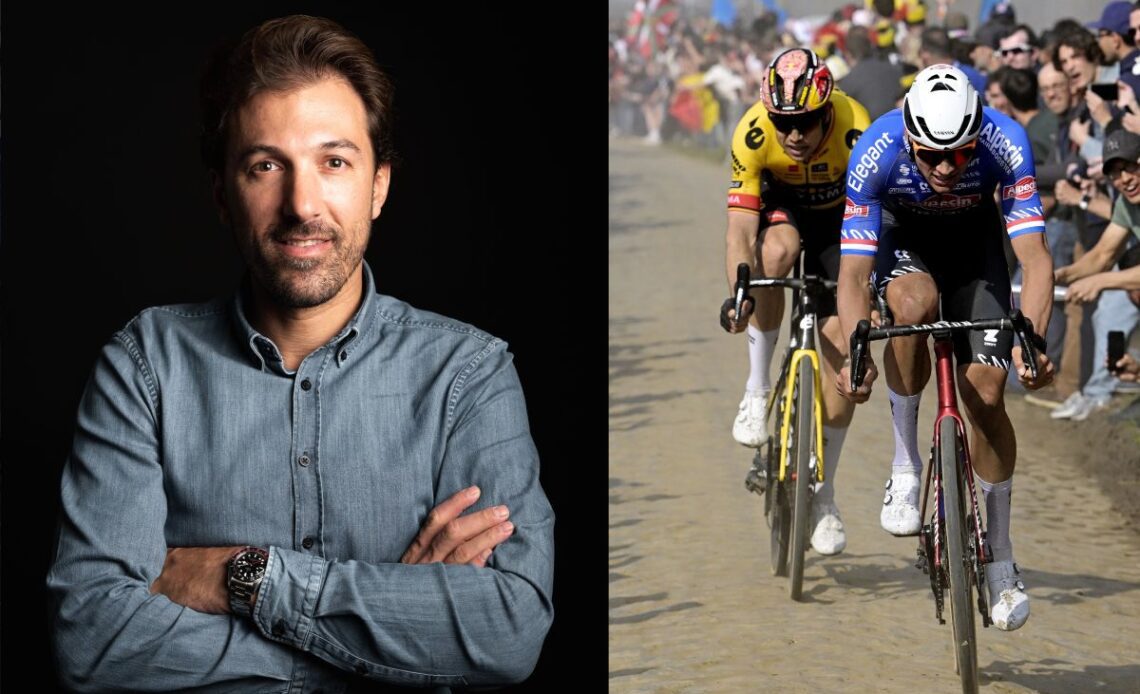Paris-Roubaix is always great to watch, but it’s also a crazy race. No matter who wins, you always come away wondering – what if? Across those sectors of pavé, there are always so many incidents and little pieces of bad luck that can add up to make a big difference at the end.
Mathieu van der Poel completed a wonderful cobbled Classics campaign with a solo victory. But when his longstanding rival Wout van Aert reached the velodrome, he must have been wondering how different the outcome could have been without two critical punctures.
Yes, two punctures. Van Aert’s puncture on the Carrefour de l’Arbre, just when he went on the attack, will be remembered as the defining image of the finale, of course. But his Jumbo-Visma teammate Christophe Laporte’s puncture in the Trouée d’Arenberg 70km earlier had already changed the dynamic of the race.
Jumbo had made quite an unexpected move with their attack on the cobbles at Haveluy. They split the race there and it was the key moment, because this was basically the beginning of the winning move, with more than 100km to go. It also looked like a good situation for Van Aert because he looked really strong, and he had Laporte with him.
But in the Forest of Arenberg, Laporte punctured, and I think this was really decisive. It influenced Wout’s tactics from there, because now he was suddenly outnumbered by Van der Poel, who had two Alpecin-Deceuninck teammates – Jasper Philipsen and Gianni Vermeersch – for company at the front. We don’t know what the outcome would have been if Laporte hadn’t punctured, but his absence certainly influenced Wout’s race tactics and mentality from there on.
With Laporte, Jumbo would have had another option and a rider to send on the attack or to control the group. I mean, just look at how well Philipsen rode for Van der Poel. Without Laporte, Wout instead had to race differently.
In the end, Mathieu attacked two or three times, whereas Wout was just following. For me, that was a sign that Wout was planning to go once and to go really deep – so deep that no one else could follow. That’s certainly what I was thinking while I was watching the race.
Mathieu’s attacks hurt – you could see it on Stefan Küng’s face when he accelerated after Mons-en-Pévèle – but at times, he was also looking tired and fatigued. I don’t know if that was just a bluff for the cameras or if he was really feeling the strain from a race run off at 47ph.
Van Aert didn’t attack as…
Click Here to Read the Full Original Article at CyclingNews RSS Feed…

